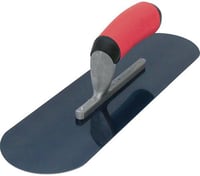
How to Avoid Divots, Dents, and Bumps in a Vinyl Liner Pool
Fiberglass vs Concrete vs Vinyl Liner | Pool Maintenance | Swimming Pool FAQs | Vinyl Liner Pool Information
If you decide to go with a vinyl liner pool, we won’t cry…much. (River Pools specializes in fiberglass pools, after all.) But that vinyl liner needs some special attention in order to live its life to the fullest.
While the builders and installers are responsible for creating your pool according to specifications, you have the power to ensure that they do so and that your pool stays in good health for as long as possible.
One way to do that is to understand how to prevent divots, dents, and bumps in the bottom of your vinyl liner pool.
Options for the pool base
The bottom of a vinyl liner pool is usually built from grout or vermiculite. Grout is a mix of sand, cement and water. It’s durable and relatively inexpensive but has more danger of shifting with the soil. Vermiculite, which comes pre-mixed or unmixed, is a mix of vermiculite, cement, and water. You can read further information and tips about these materials here.
After the builders pour the material, they use a trowel to smooth it all out. This isn’t a garden trowel you’d use for digging—a pool trowel is long and flat with rounded edges.

The vinyl for a pool will be 20-30 mils thick, which is about 10 sheets of paper. Note: a mil is not the same as a millimeter. A mil is 1/1000 of an inch, also called a “thou” outside the US (as in a thousandth). For comparison, it takes about 39 mils to equal 1 mm—and a mm is already tiny. So your vinyl liner is super thin, not even a full mm thick, which means you have to be extra careful it doesn’t get punctured.
The causes
I know “divots, dents, and bumps” sound like I spent some extra time with my thesaurus, but they’re actually three different things.
- A divot is usually caused by a heel print when the builders, or possibly the pool owners, walk over the fresh pool base.
- A dent might be because someone troweled too hard and left a mark, something fell in the pool during construction, or the liner was installed too soon.
- A bump comes from a rock or pebble (hard) or a ball of vermiculite (soft) that formed during troweling and rolled to the pool bottom.
Bumps of overmixed vermiculite can sometimes be smushed down gently by hand. “Smushed” is definitely the technical term for that.
Thankfully these issues won’t generally shorten the life of your pool liner. They’re only cosmetic problems, with the possible exception of a rock or pebble, which could eventually puncture the liner.
What can I do to prevent this?
From the beginning, you should make sure you hire someone experienced in finishing pool bottoms. To get an idea of your builders’ experience, ask them how many pools they’ve done. You can even ask for customer references if you want to be extra thorough.
You should also be aware of the process that vinyl liner pool builders should use. This way you can ask your chosen builders questions about it up front and get an idea of how experienced and detailed they are. We recommend you question multiple builders and compare their answers.
You can read a detailed description of the construction process for a vinyl liner pool base at this site. For now, though, here’s a quick outline:
- Assemble the wall panels (metal or plastic) by bolting them together and securing them.
- Pour eight inches of concrete around the outside perimeter.
- Install the plumbing.
- Apply vermiculite or grout pool bottom.
- Install the vinyl liner.
- Install the patio.
- Start up the pool.
Don’t overmix the vermiculite. Remember, that can make it ball up and cause bumps in the pool bottom. If you’re not mixing the vermiculite yourself, you can still ask the builders about their methods to ensure they know what they’re doing.
Unfortunately, once you have a divot, dent, or bump, the only thing you can do is to drain the pool, repair the problem area, and replace the liner.
What if I’m replacing the liner myself and want to repair the issue?
These issues can be fixed as a DIY project as long as you’re careful; however, it’s often not worth the trouble.
Once you drain the pool and remove the liner, you should be able to clearly see the divot, dent, or bump you want to repair. To fill in a dent or divot, you can purchase concrete patch material at any hardware store, mix it with water, and trowel it onto the surface. You don’t have to worry about applying the liner too soon because the fresh material only covers a small area.
You’ll also need to sweep the surface thoroughly. More debris gets into the pool base during the replace-and-repair process, and your hard work will be for nothing if rocks, dirt, or vermiculite make new dents and bumps under the new liner.
If you’re considering a new inground vinyl pool and the idea of dealing with these issues makes you feel a little unsettled, perhaps you should consider a fiberglass pool. Fiberglass pools have no problem with pool bottom inconsistencies because they’re manufactured in a controlled setting with precisely built molds.
At River Pools, we manufacture world-class fiberglass swimming pools for installation across North America. Take a look at our full line of pool models (we have a wide variety of shapes and sizes for small to large backyards), and view our gallery to see what we can do for your inground pool project.
Wondering how much your fiberglass pool might cost? Contact us today to request pricing and discuss the individual needs of your project. In the meantime, why not try out our fiberglass pool pricing calculator below for a fast estimate?

Want to see about how much that cost will be with all your favorite pool accessories?
Use our Design and Price Tool to walk through your options and approximate price!
If you’d like to learn more about the differences between vinyl liner pools and fiberglass pools, you can read about the pros and cons of the pool types here. You can also download our free ebook comparing the three main inground pool types by clicking the button below. Thanks and happy swimming!
 Up Next:
Up Next:
How Long Do Vinyl Liner Pools Last?
Vinyl Liner Pool Basics: Pros, Cons, and How They’re Made
A Guide to Inground Swimming Pool Size, Costs, and Prices: Everything You Should Know
Editor's Note: This article was originally written by Holly Jender on September 22, 2017. Any opinions expressed are those of the author. Any prices referenced were based on information that was readily available at the time.
River Pools is a brand of inground fiberglass pools produced in a manufacturing facility in Fortville, IN. While our expertise is in manufacturing fiberglass pools, we have access to a network of installers with expertise relating to project design, installation, and pool service. We often tap into this knowledge base and share information freely with homeowners, just like you, considering installing a swimming pool in your backyard.




